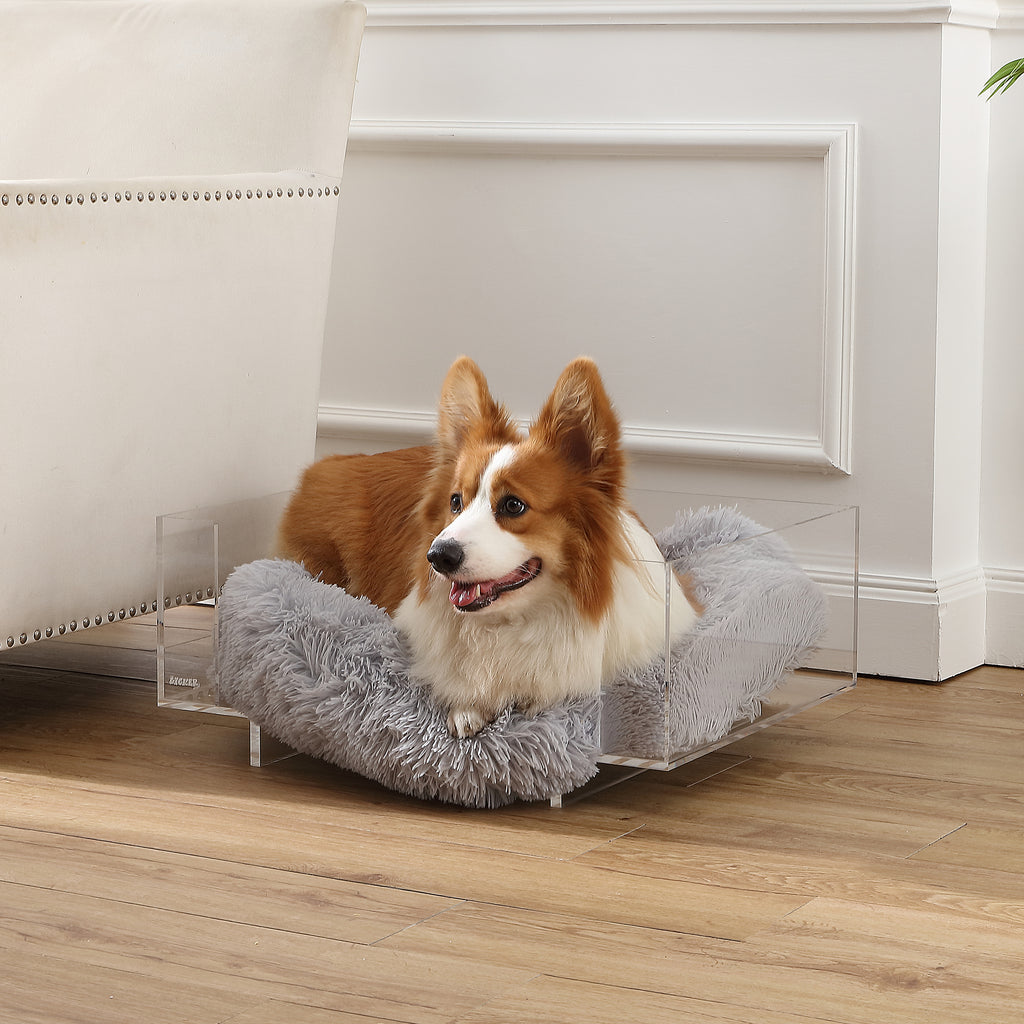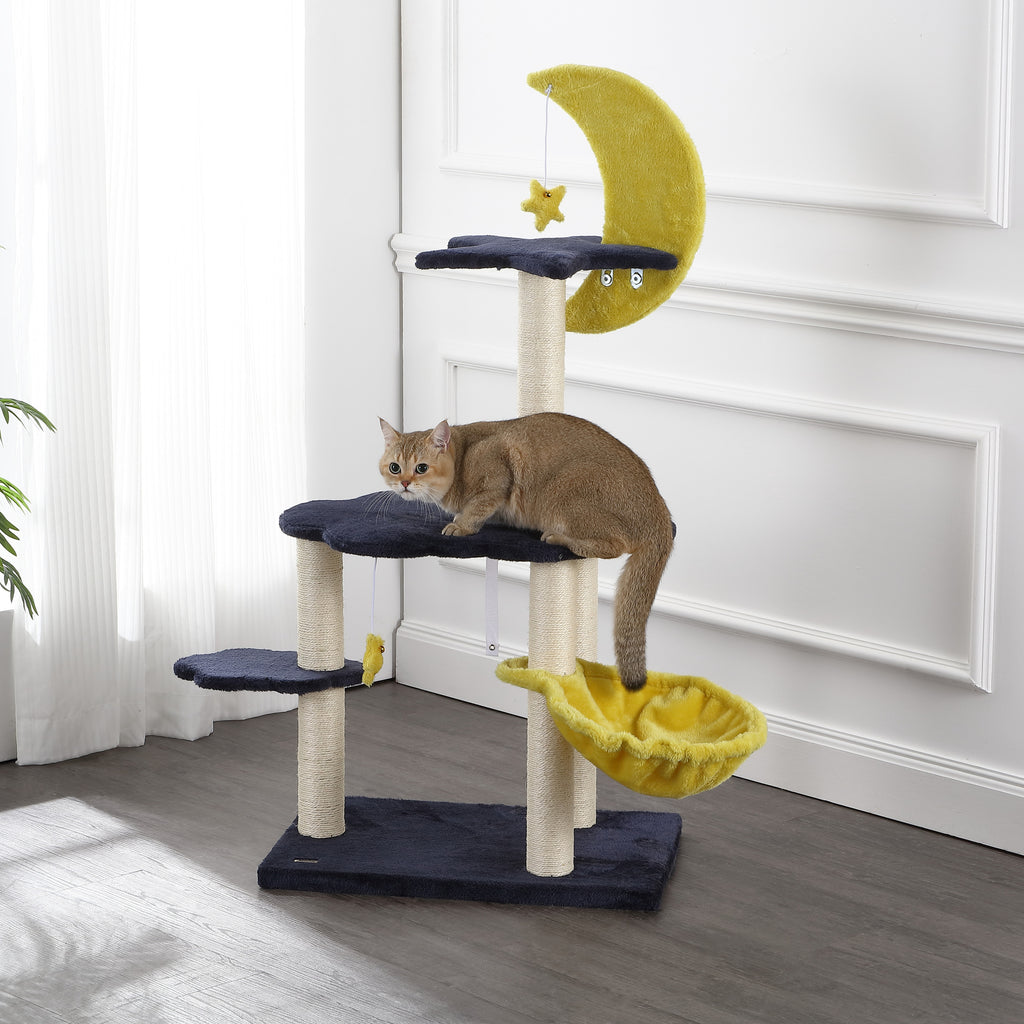If you’re a dog parent, you’ve probably noticed a funny bedtime ritual. Your dog circles around, paws at the bed, and then scratches furiously before finally curling up to sleep. At first, it might seem confusing—or even destructive if they’re tearing through a brand-new dog bed. But don’t worry, this behavior is completely natural and has deep roots in canine instinct.
In this article, we’ll uncover the reasons behind bed scratching, explain when it’s normal, when it may signal a health concern, and provide practical tips to keep your pup comfortable while protecting your furniture and dog bed.
The Instinctual Roots of Bed Scratching
Dogs didn’t always have cozy memory foam beds or cushioned mats. Their ancestors, like wolves and wild dogs, had to create sleeping spots in the wilderness. Scratching, circling, and pawing helped them prepare a safe and comfortable place to rest.
When your dog scratches their bed today, they’re carrying out this age-old behavior. Even though your living room isn’t the forest, the instinct to “nest” remains strong in every canine.
Nesting: Making the Spot Just Right
Nesting is one of the strongest explanations for this behavior. In the wild, dogs would scratch leaves, grass, or dirt into piles to form a makeshift mattress. This created a softer, warmer, and safer place to rest.
At home, even though your dog has a plush bed, they still feel the need to adjust it. That scratching and digging motion is their version of “fluffing a pillow.”
Marking Territory With Scent
Here’s something fascinating—dogs actually have scent glands in their paws. When they scratch surfaces, they release pheromones, leaving behind a chemical “signature.”
By scratching their bed, they’re not just getting comfortable; they’re also claiming ownership. It’s their way of saying, “This is my spot.” If you have multiple pets at home, you might notice more scratching as each tries to reinforce their claim.
Temperature Control and Comfort
Scratching can also help dogs regulate body temperature. In the wild, digging into the earth exposed cooler soil during summer or created a warmer insulated space during winter.
Even though your dog has air conditioning or heating, the instinct to adjust their sleeping area for comfort is still alive. You may notice more scratching:
-
On hot days, when they’re trying to cool off.
-
On cold nights, when they’re seeking warmth.
A Bedtime Ritual That Brings Security
Just like humans have routines before bed—brushing teeth, dimming lights, or fluffing pillows—dogs have their own rituals. Scratching is often part of this comforting routine.
The act of scratching and circling helps dogs release energy, feel safe, and settle in for a deep sleep. It’s essentially their way of telling themselves, “Okay, now it’s time to rest.”
Scratching as Stress Relief
For some dogs, scratching has a psychological purpose. It can serve as a way to relieve stress or anxiety.
Triggers for anxiety scratching include:
-
Fireworks or thunderstorms.
-
Separation anxiety when you leave.
-
A new environment, like moving homes.
-
Household changes, such as new pets or people.
If scratching becomes excessive during stressful events, it’s likely a self-soothing behavior.
Boredom and Excess Energy
Dogs with high energy or insufficient stimulation may scratch their beds simply because they need an outlet. If your pup isn’t getting enough exercise or mental enrichment, repetitive behaviors like scratching, chewing, or digging may increase.
A tired dog is usually a happy (and less destructive) dog. Adding more walks, playtime, and interactive toys often reduces boredom scratching.
Could Scratching Signal a Health Problem?
While scratching is usually harmless, sometimes it may point to a health issue. Watch closely if your dog seems unusually restless, uncomfortable, or destructive with their bed.
Possible health-related causes include:
-
Allergies: Skin irritation can make them scratch against surfaces.
-
Parasites: Fleas and ticks cause itchiness that leads to restless behavior.
-
Joint Pain: Dogs with arthritis may try to adjust bedding for relief.
-
Skin Conditions: Infections, dryness, or dermatitis can make scratching compulsive.
If you notice these signs, it’s worth a trip to the vet.
How to Support Your Dog’s Natural Scratching Behavior
Since scratching is natural, the goal isn’t to stop it but to support it safely.
Here’s what you can do:
-
✅ Buy a Durable Dog Bed: Heavy-duty fabrics withstand scratching.
-
✅ Pick Washable Options: Beds with removable covers are easy to clean.
-
✅ Add Blankets: Layering blankets allows dogs to “dig” without damage.
-
✅ Provide Adequate Exercise: Walks, play sessions, and enrichment toys help.
-
✅ Use Calming Aids: Pheromone sprays or calming music may ease anxious scratchers.
Choosing the Right Dog Bed for Scratchers
If your dog is an enthusiastic scratcher, the type of bed you choose makes a big difference. Look for:
-
Tough Materials: Canvas, denim, or reinforced polyester.
-
Supportive Fill: Memory foam for joint support.
-
Washability: Removable covers for hygiene.
-
Cooling/Heating Features: Beds with gel inserts or heating pads.
-
Correct Size: A bed large enough to circle and scratch comfortably.
Investing in the right bed keeps your pup happy and saves you from frequent replacements.
When Scratching Becomes a Concern
Occasional scratching is fine, but watch for red flags:
-
Nonstop scratching paired with general body itching.
-
Bald spots or raw patches on skin.
-
Whining, restlessness, or difficulty settling.
-
Repeated destruction of multiple beds.
These signs suggest scratching may be more than instinct—it may be a health or behavioral issue.
Expert Advice for Pet Parents
-
Don’t punish scratching—it’s instinct, not misbehavior.
-
Redirect destructive scratching to appropriate surfaces.
-
Rotate between two or three beds to extend lifespan.
-
Ensure your dog’s daily routine includes enough exercise and mental activity.
-
Schedule vet visits if scratching seems compulsive or linked to discomfort.
Frequently Asked Questions (FAQs)
Q1: Why do dogs circle before lying down?
Circling is part of their nesting instinct. It ensures the area is safe and helps them find the right sleeping position.
Q2: Should I train my dog to stop scratching their bed?
No. It’s natural behavior. Instead, provide durable bedding and redirect if needed.
Q3: Can bed scratching damage my dog’s paws?
Unlikely, unless the bed has sharp zippers or hard edges. Always check the bed for hazards.
Q4: Why does my dog scratch more at night?
Many dogs scratch as part of a night time ritual before sleep. It’s their way of winding down.
Q5: What’s the best type of bed for heavy scratchers?
Beds with strong fabric, double stitching, and washable covers are ideal. Memory foam adds comfort for senior dogs.
Final Thoughts
So, why do dogs scratch their beds? The behavior comes from a blend of ancient instincts, comfort needs, and emotional regulation. For most dogs, it’s perfectly normal.
By providing a durable, comfortable bed and ensuring your pup gets enough exercise, you can support this natural behavior without frustration. Keep an eye out for signs of anxiety or health issues, and remember—scratching is just one of the many adorable quirks that make dogs unique.
After all, every circle, paw, and scratch connects them back to their wild ancestors while keeping them cozy in your modern home.






